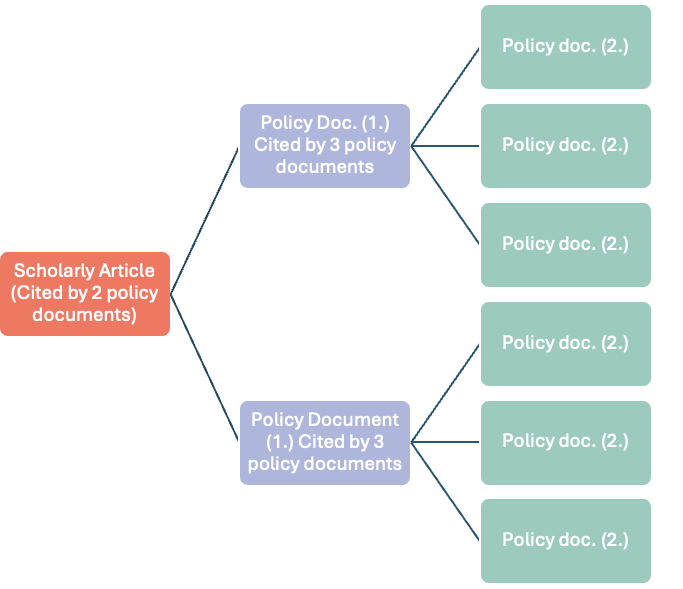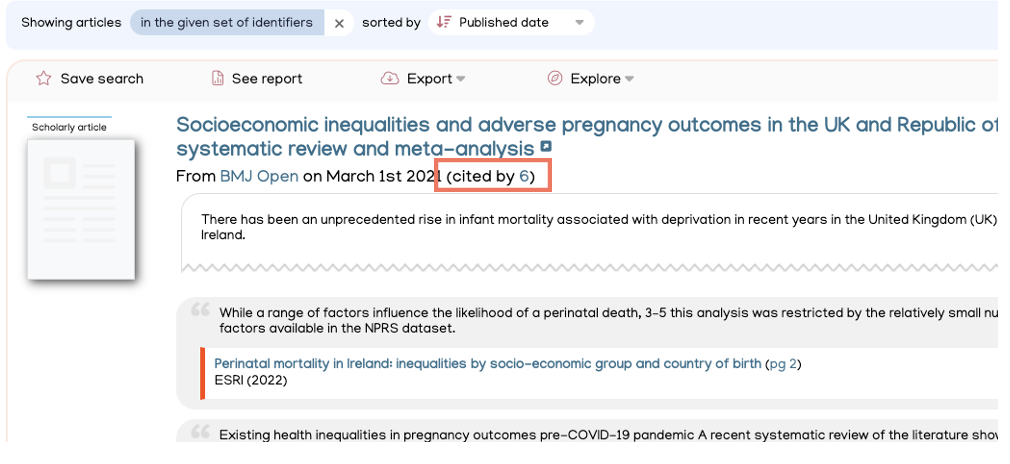Keeping track of how research from a scholarly article spreads into policy documents can be pretty tricky, especially as it moves from the original source to secondary, tertiary, and even further citations!
A visualisation like this one below can help. It begins with a scholarly article, which has been cited in 2 policy documents. These are the primary citations. Each of those policy documents is cited by a further 3 policy documents. These documents contain the secondary citations (also referred to as second order citations).

How to go from primary to secondary policy citations
This example begins with a scholarly article search result. It has been cited by 6 policy documents. Clicking on the ‘6’ will take you to the list of 6 policy documents that cite the scholarly article. These documents contain primary citations.

In the grey action bar above the 6 policy document results, there is an option called ‘Explore’. From ‘Explore’ you can select “see the policy citing these documents” to see if the original 6 policy documents have been further cited.

In this case, 19 other policy documents cite the original 6 policy documents. These 19 documents contain the secondary citations.

Users can continue using ‘Explore’ and “see the policy citing these documents” function. However, bear in mind that as you go further down the citation chain, the likelihood of having a direct impact could lessen.

